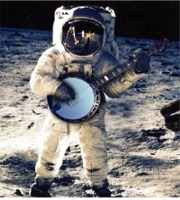Animated sequence of the thoroughbred bay mare "Annie G." galloping. Photos published by Eadweard Muybridge, 1887, Philadelphia. Animation by Waugsberg, 24 September 2006. ("This image (or other media file) is in the public domain because its copyright has expired" - Wikimedia Commons.)
City of Lincoln Waites
The Lincoln City Races
The Prize
The prize mentioned many times in Council Minutes and Accounts is always referred to as the "City Plate" or "Corporation Plate". In 1767 the Corporation put up £50 for the City Plate. In September 1815, the Clerk of the Course was again reimbursed £50 for the "Corporation Plate".
The Spectacle
The Race Course was decorated with brightly coloured flags, to add to the holiday atmosphere. In 1766, James Barratt was paid for flagstaffs (L1/4/1) and in 1798 new silk flags were purchased for the course (L1/4/1/2).
The Drummer 1766 - 1768
Richard Haselwood was employed for drumming at the Races between 1766 and 1768.
Staffmen
It appears that Staffmen were employed at the Races. Perhaps they would appear similar to the 'Javelin Men' that were employed as special constables to guard the judges coach as he travelled to the assizes? Perhaps they also formed a parade - as entertainment before or in-between the races? A number of names occur as "staffmen" in the accounts for the mid 18th century, including Thomas Barker and James Fowler (L1/4/1/1). Two of the Fowler family served as Council members.
Keeping Order
It is easy to imagine that people may drink a little more alcohol on a Race Day than on a work day. This idea is supported by the fact that the Corporation found it necessary to pay Robert Babb for warding at the Races in 1768 (L1/4/1/1). Robert Babb also had a connection to the Waites because he was paid to Cry the Fairs, as were the four Waites (L1/4/1/1).
The Clerk to the Course
In the early 19th century John Drury (the Printer) was the Clerk to the Race Course. He printed tickets and supplied any other stationery that was required. His bill for October 1811 was £32.10s (L1/4/1/2) and for September 1818, £34.8s.6d (L1/4/1/3). Drury was a printer by trade and a few years earlier, in 1798, he had printed a broadsheet entitled Lincoln Races.
Other Costs
The City Accounts list many entries of associated expenses between 1764 and 1835: to level the ground; purchase seeds; weeding; mowing; erecting and repairing fences; erecting posts and rails; putting up temporary barriers using posts and ropes; paying herdsmen to keep cattle off the course; paying the boys from the House of Industry to keep cattle away from the Race Stand, etc. (L1/4/1/1, L1/4/1/2, L1/4/1/3, L1/4/1/4). These costs are too many to list individually and are too great a departure from the real subject of this website, however, anyone with a particular interest in Lincoln Races could easily find the entries in the original ledgers (L1/4/1/1, L1/4/1/2, L1/4/1/3, L1/4/1/4).
In amongst these lines and lines of expenditure on the Races, are the following four entries:
- 1 May 1779: "Dickinson working at Race Ground - 10s.6d" (L1/4/1/1)
- 1 May 1779: "Henry "Dickinson in full - £1.17s" (L1/4/1/1)
- 16 February 1781: "Paid Henry "Dickinson for work done at the Race Ground as per Rect - £3.17s.6d (L1/4/1/1)"
- 14 November 1782: "By Paid Edw "Dickinson for work done at the Race Ground as per Receipts - £1.6s.8d" (L1/4/1/1)
There is no evidence that the Waites ever performed any official function at the Races, however these links to the Dickinson family and to Robert Babb do suggest that Lincoln Races were an important part of the lives of many Lincoln people, including the Waites.









